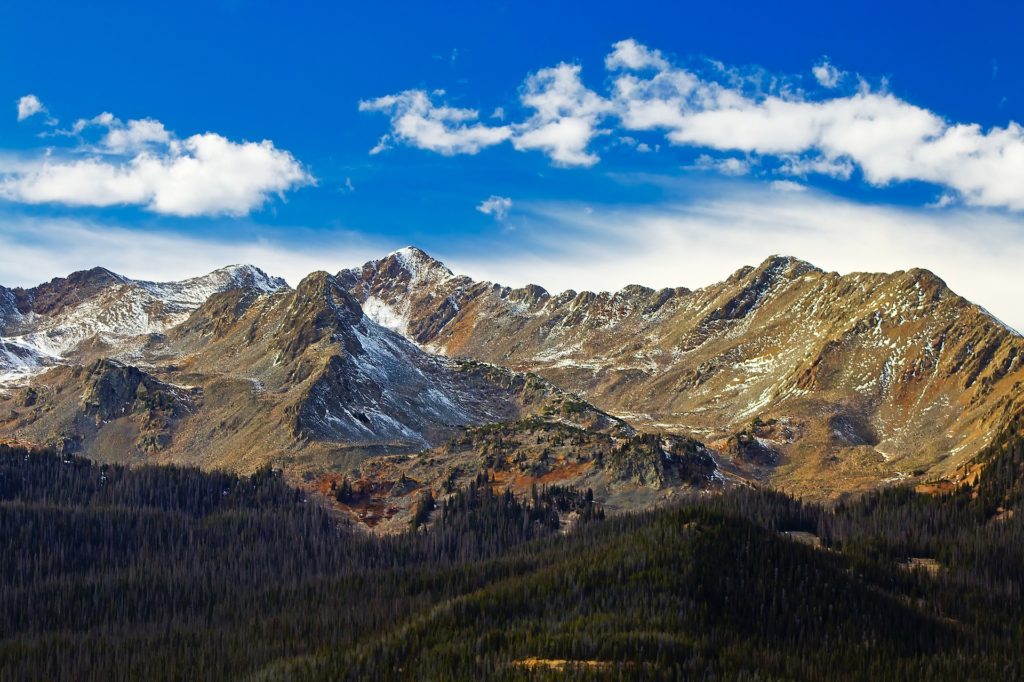
First Descent – You are doing an alpine ascent of a remote 13’er in Colorado’s Collegiate Range. You summit just as clouds and mist drop down to engulf you. After a quick handshake with your three buddies you hurriedly begin your descent. Somehow, in the thick clouds—like being inside a ping pong ball—you get off route on the Class III terrain (steep, with exposure, but not requiring ropes). Karen is checking out a gully as a potential descent route, when you hear a yell. You see Karen take a nasty fall, tumbling down about 20 feet to a wide ledge.
Scene and Primary Assessment: She is at the base of a gully full of loose and rubbly rock. You and your buddies after slowly and very carefully down-climbing to her. You find her unconscious and quickly and carefully drag her under a big boulder offering protection from rock-fall. Weather starting to get nasty, but terrain below you looks like it mellows out. Everyone else is okay, at least for now. Karen’s ABCs are normal.
Secondary Physical: You kneel down and shake Karen’s shoulder and she moans. She slowly comes-to, going from P to V within 5 or so minutes. Her helmet is cracked. After carefully removing it you find a nasty bruise, but no blood, on the back of the head. She improves to A on the AVPU scale. Her biggest complaint is a very painful wrist that definitely doesn’t look normal. She can’t move it nor her hand. She has very poor cap refill on that hand. Scrapes on both hands, but otherwise, no injuries.
SAMPLE: Symptoms as described. No allergies. She takes blood thinner and a daily acid reflux medicine. No relevant history. Last ins and outs normal. Karen claims she just slipped on the wet rock, resulting in her fall.
Vitals: Round 1 – HR 92, RR 22, V on AVPU. Round 2 – HR 84, RR 20, AOx3 on AVPU
Setting: ~12,500 feet on isolated peak, 2 miles and 1,500 vertical feet from nearest trail; 6 miles and 2,500 vertical feet from trailhead. It is late May, about 2 pm. It’s not exactly raining, but in the cloud’s mist it is pretty wet. No wind. You get a brief break in the clouds and you figure you are on the west side of the mountain, but other than that, you don’t really know where you are. You all are well equipped for a long day out (extra clothes, water, food, first aid kit, etc.) but no camping gear. You have a cell phone and while there is no coverage right where you are, you had coverage on the summit and most of the way up the east side of the peak.
RESPONSE
What do you do?
If necessary, discuss leadership. Hold Karen’s head and neck hand stable and you get her to sit on top of one of your packs, off the cold ground. Assess her spine and are able to “clear it.” Splint her wrist and warm her with extra layers then get her to eat and drink.
What are Karen’s anticipated problems?
A concussion would always worry me. She was briefly unconscious and it was a bad enough fall that her helmet is cracked – increasing ICP.
I would be worried about the wrist and poor cap refill. Depending on its severity I might consider the need to reduce the fracture.
Hypothermia as (almost) always! At 12,000 feet altitude would definitely need to be considered. I would be very worried about where I was on the mountain and getting off route and/or lost on the descent or while going for help. It is 2 pm and I would be worried about thunder and lightning. I would see if Karen was capable of walking and if so how well.
Plan:
Make sure the three uninjured climbers (as well as Karen) are dry, warm, hydrated, and fed. If Karen was up to it, visibility continued to improve, and there is a trail below on the west side I would consider continuing to descend from the scene of the accident. If lightning and thunder are seen/heard I would try to quickly descend to tree line. If there wasn’t a trail on the west side, and there was not lightning and thunder, I would consider re-tracing my steps back to the summit (assuming Karen was up to it).
If Karen was not mobile I would have one stay with her (leaving lots of clothing, rain gear, food, etc.) and two descend (or ascend if no trail on west side), self sufficient and with copy of SOAP note, until there is phone connectivity and I’d call the local sheriff for a SAR team to extricate (most likely by helicopter).
Depending on how far away the two had to go to make a call, how tired they were, the weather, I’d hope one or both might return after the call to report to Karen and her caregiver and help if needed. However, it might make more sense to have the two wait for rescuers to point the way back to Karen, et al. The good news is that you have lots of daylight left.
